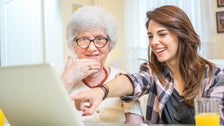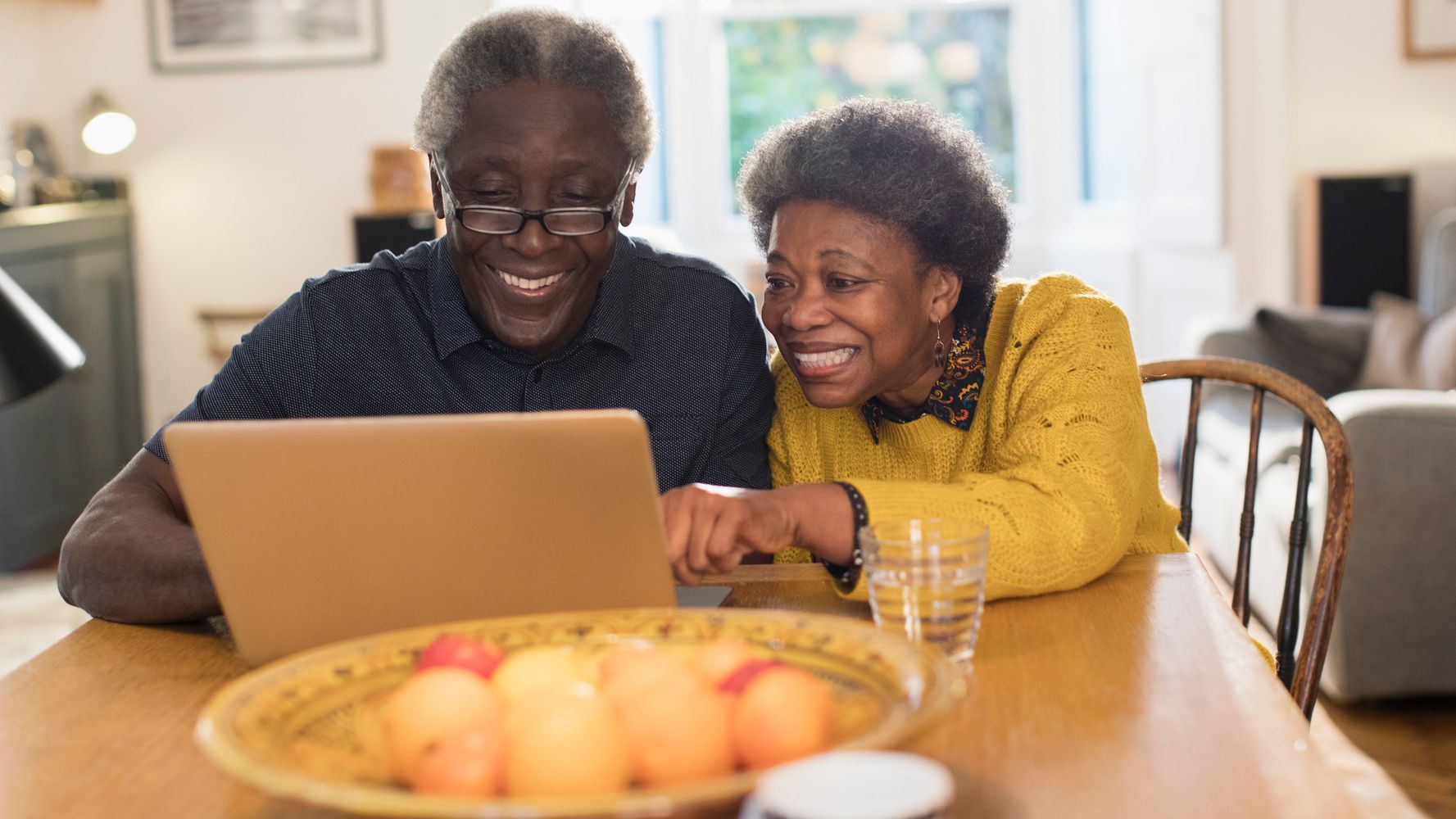[ad_1]

Two weeks after my 27th birthday, my business partner and I moved into a retirement home. We’re starting a company that helps students earn money for college by teaching tech to older people, so we wanted to learn as much as we could about seniors (and, yes, save on rent). While our Stanford Business School classmates spent those summer nights sipping cocktails at chic bars, Deirdre and I dined on pot roast at 4 p.m. with residents, a few of whom were alive during World War I.
During our first few nights living at Baywood Court, we felt nervous and awkward. Though I’ve motorcycled down the coast of Vietnam, swum with hammerhead sharks in Ecuador, and trekked alone along the great plains of Mongolia, I felt more vulnerable walking into the home than I ever did during my travels. We were unsure about how to interact with older people and insecure about what we had to offer them.
We weren’t alone in our discomfort. In the United States, only 6 percent of people over 60 said they’d discussed important matters with a non-family member under 36. Census data from 1990 to 2010 shows that in some regions, people 60 and above and people 20-34 are as segregated as Hispanics and whites. For the first time, there are more Americans over 50 than under 18, and ours is the most age-segregated society ever.
For the first time, there are more Americans over 50 than under 18, and ours is the most age-segregated society ever.
But after my experience, I’ve come to believe that maybe we can help bridge the divide by doing something that’s typically thought of as epitomizing the erosion of social skills among young people: playing on our smartphones.Â
Over peach cobbler in the retirement home dining room, I met Ruth, a 96-year-old from Minnesota. Ruth told me about a hymn her mother used to sing for her and her siblings, lamenting there was no way she could ever remember the tune. When I asked if she remembered its name, she replied “Little Boy Blue.†Two clicks later, I had pulled up a YouTube video with a muffled record-player. As I held the phone to her ear, she grabbed my arm in shock, fingers digging into my skin. “It’s a miracle!†she yelled over and over again, tears streaming down her face.
I bonded with Sylvia, 76, over apple crumble — and her admission that she didn’t understand cloud storage and could use some help. I recruited local high schoolers to give technology lessons to residents like her. “You know how a cloud holds all the rain?†Eli, a local high school sophomore, asked Sylvia sweetly, recognizing her frustration. “Real clouds hold rain, but this cloud holds all your data.†He showed her how to upload and download photos from the cloud. Suddenly Sylvia’s posture seemed to straighten, the clarity inflating her with newfound confidence. She grinned in disbelief at the effortless way this patient 15-year-old demystified her concerns.
The high school students taught Helen, 90, how to check her voicemails. Nettie, 86, learned to download books on her Kindle. And Jean, 89, can now share a happy birthday post on Facebook. Fern was ecstatic to take her first photo with her iPad, and even prouder when she learned to view it. Judy, 80, learned to save and delete emails and found several from friends that she had missed. Â
Teaching an elder to use technology over a slice of pie is the 21st century’s version of helping an old person cross the street. Why don’t more of us do it?
If you introduce someone to YouTube, in their eyes you’ve invented it. If teaching an elder to use technology over a slice of pie is the 21st century’s version of helping an old person cross the street, then why don’t more of us do it?
To be sure, there are legitimate concerns about tech addiction, and even millennials feel an authentic nostalgia for the days when we spent more time interacting face to face. We’re addicted to checking our phones, and feel shame when others draw attention to our tech compulsions, so we silence our phones in our pockets. But in so doing we could be missing out on opportunities to give elderly people tools that can really enhance their lives. And we can have fun together in the process.
Experimenting with tech together doesn’t have to replace old-fashioned interaction with older people— it can enhance it. After a few weeks of email lessons and shared laughter over YouTube videos, my new senior friends were doing things like slipping notes under my door, as if in college. They endured my terrible poker skills and danced with me to hip-hop songs during aqua aerobics classes. And yes, we snapped pictures of all this to send to their children and upload to Facebook.
But the stakes of elderly people being left out of the digital and social media revolution are higher than a forgotten Facebook post. In our stay at the retirement home, residents lamented the repetitive nature of each day. They would eat breakfast, go for a short walk around the grounds, eat lunch, have coffee with a friend, eat dinner and maybe watch a movie. Several confided in us that they longed for more intellectual stimulation, and to interact with the world outside of their retirement bubble. With online courses and online communities, and new ways to communicate with their loved ones, they could use their new digital skills to emotionally engage and stay sharp.
Meanwhile, this holiday season, don’t listen when your parent — or that guilty voice inside your own head — nags you to put away your smartphone. Invite your grandma and her friends over for a slice of pie, with a side of tech help. Get out there and create your own “Little Boy Blue†moments. If you’re feeling particularly daring, visit a retirement home and connect with a new friend over pie and YouTube songs from the 1920s. Delight the seniors you love as you welcome them into your world, and learn about theirs, using all the tools available. And try the pork chops — they’re delicious.
Danielle Pensack is an M.B.A. student at Stanford. She and her classmate Deirdre Clute started charitize.org, a social impact startup.
Calling all HuffPost superfans!
Sign up for membership to become a founding member and help shape HuffPost’s next chapter
[ad_2]
Source link






